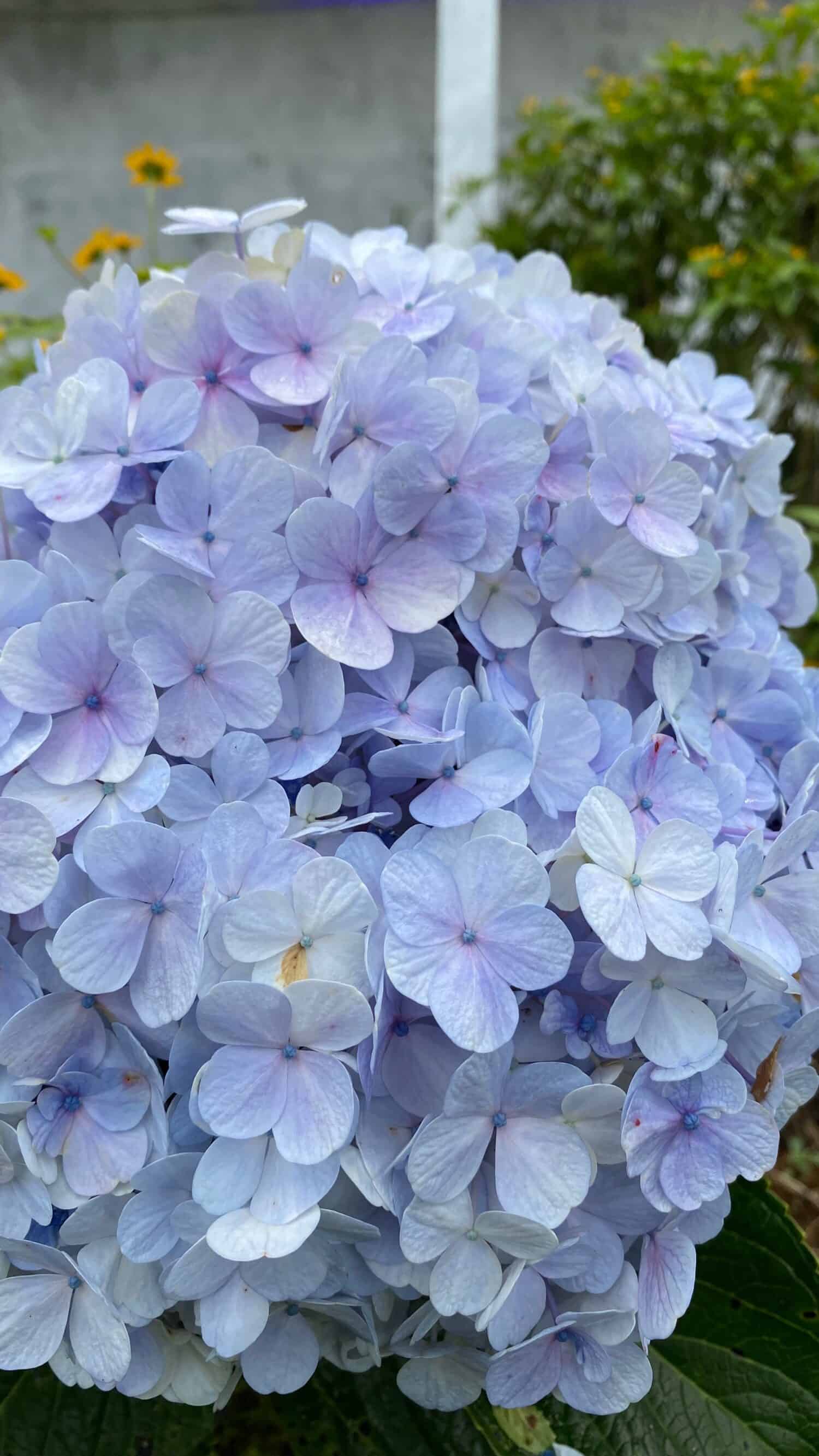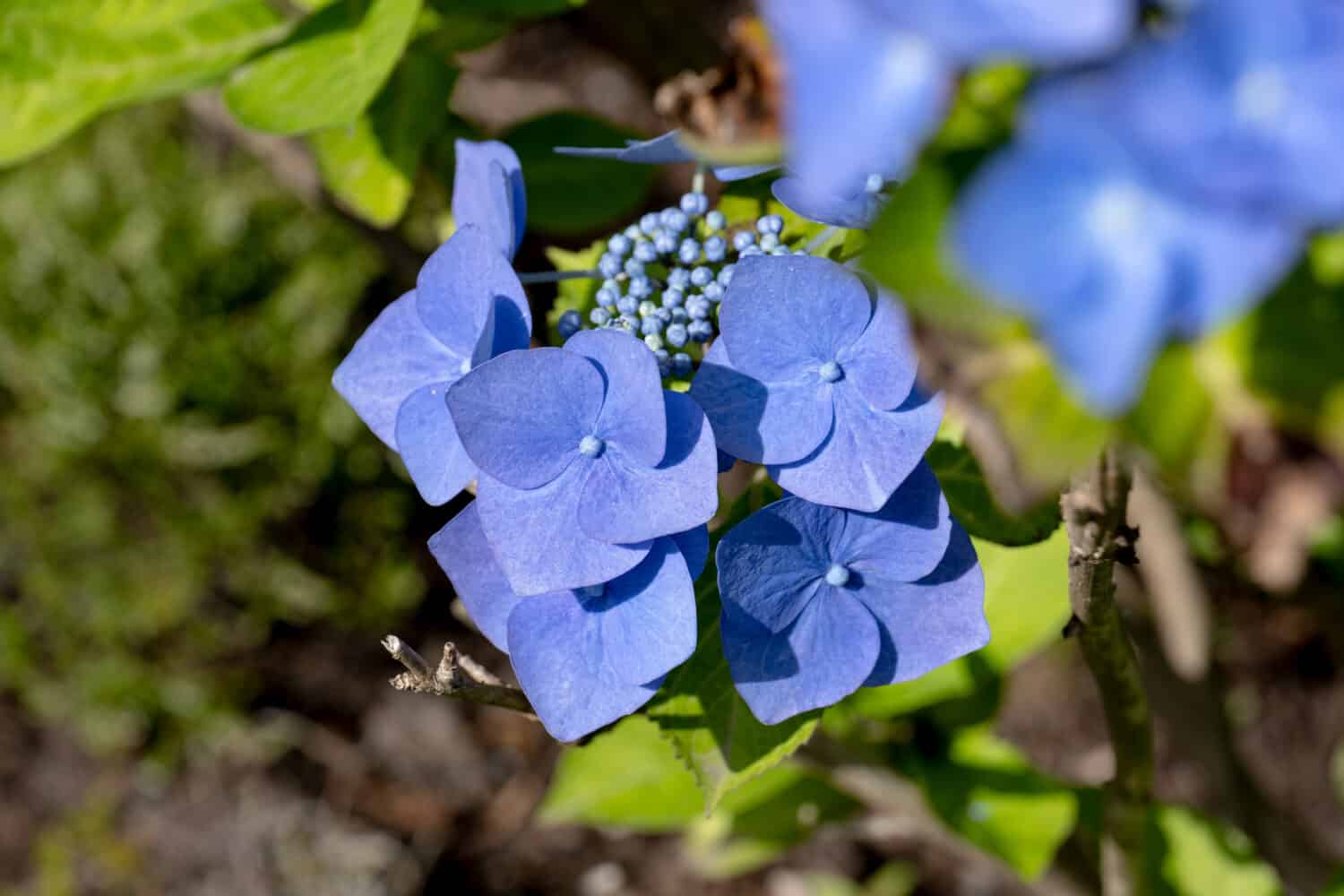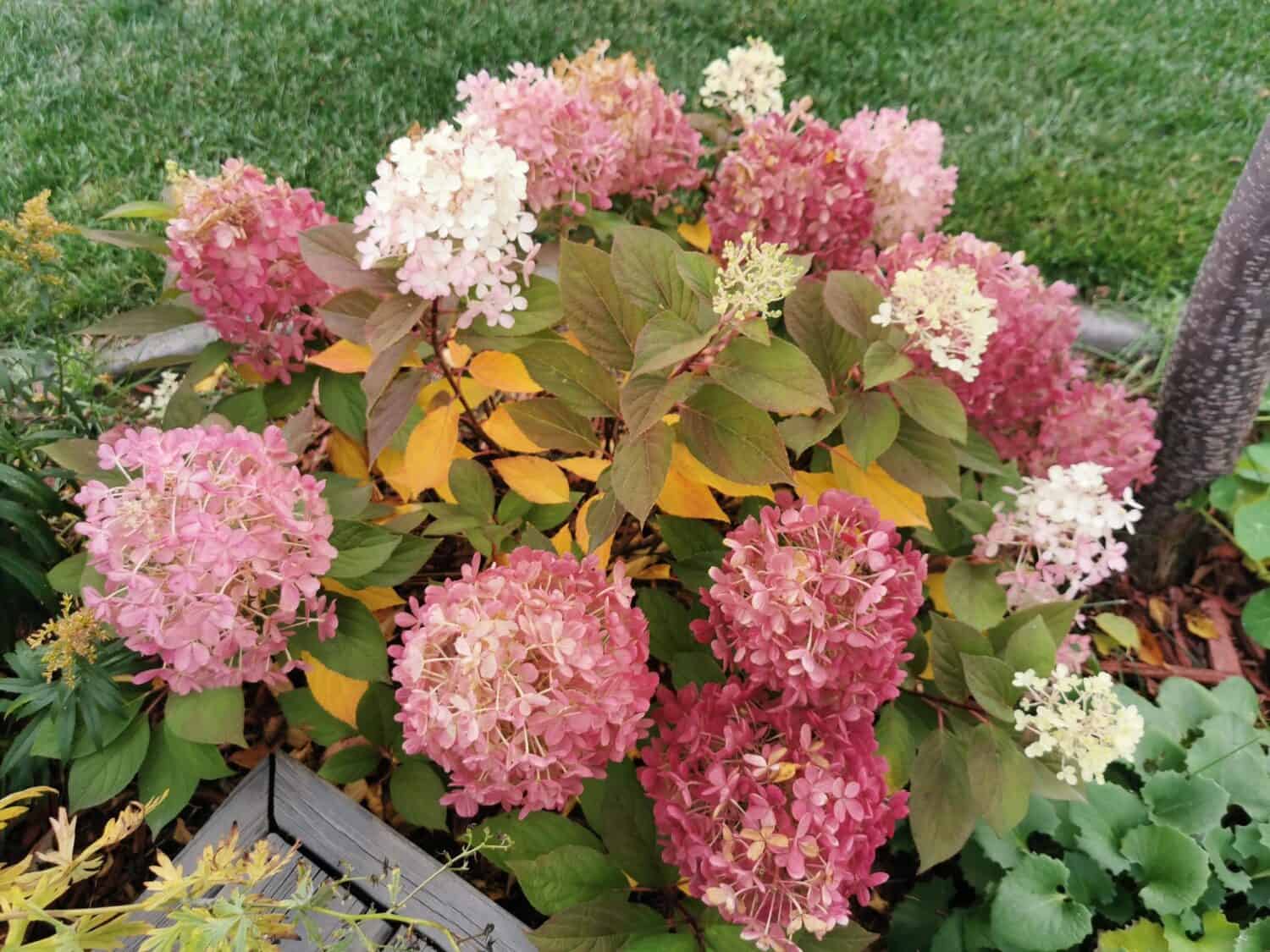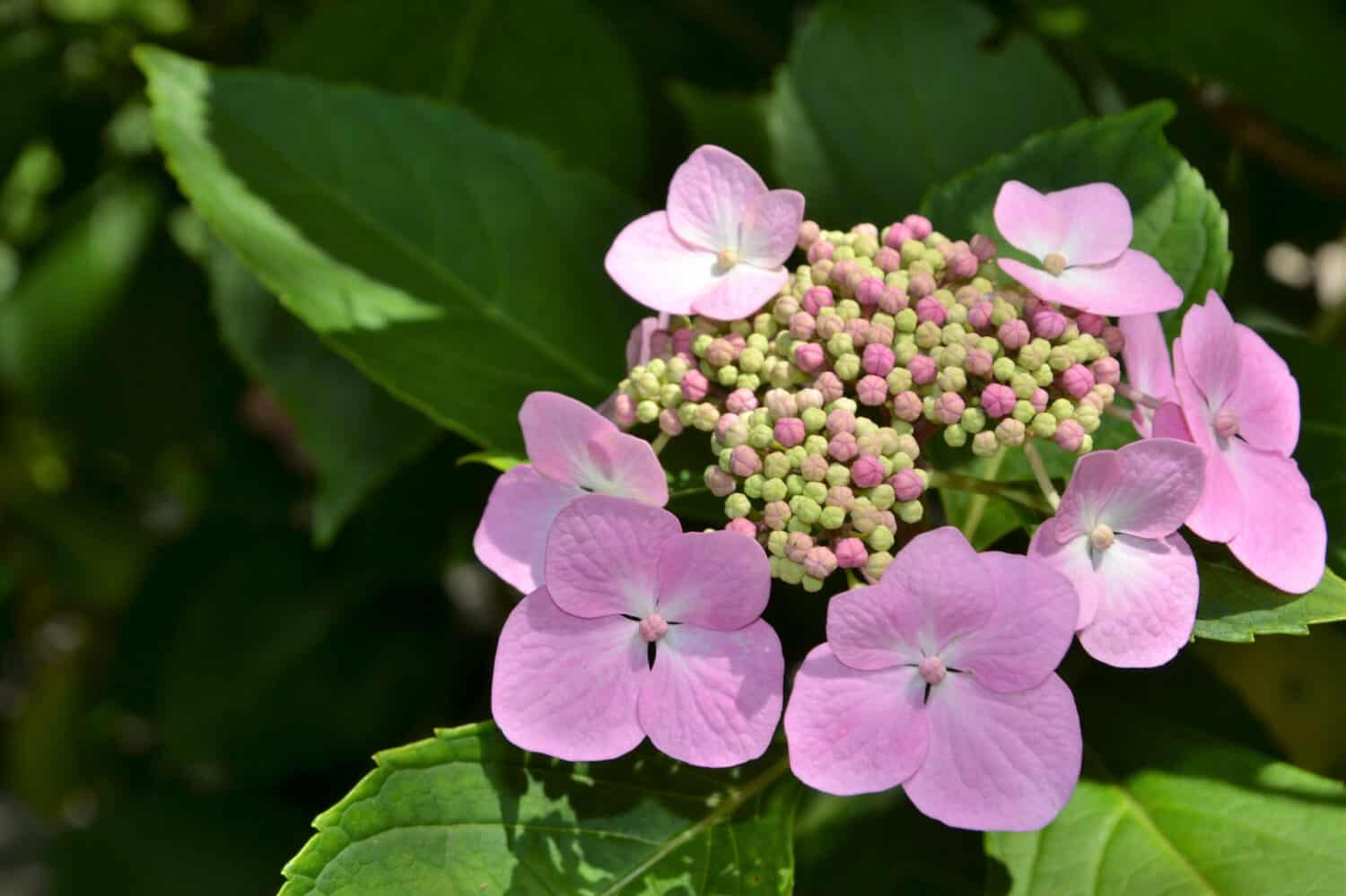Are you a serious hydrangea fan who doesn’t live in an area that receives plenty of sun? Did you feel like you may not get a chance to grow one of your favorite flowers because of your shaded environment? We have some good news! You can plant hydrangeas in the shade and see them thrive! There is one catch, however. You need to select a cultivar or variety that can withstand at least partial shade, or you won’t be successful. And we are here to do just that. Below, we explore details about 15 stunning hydrangeas that thrive in shaded conditions.
Let’s dive in!
Hydrangea macrophylla
This variety is known as Big Leaf Hydrangea, aptly named for its stunning and large foliage. The dense leaves are the ideal way to showcase the large flowers found in this plant group.
1-‘Big Daddy’
As one may guess, this hydrangea cultivar gets its name from its enormous blooms. They blossom in either blue or pink (depending on the soil acidity level) and can handle a significant amount of humidity. Feel free to use these stunning flowers in bouquets.
‘Big Daddy’ hydrangeas are winter hardy in USDA Hardiness Zones 6a-9b.
2-‘Blue Enchantress’
Get ready to be amazed by the ruby-black stems that support the color-changing flowers on this plant. The blossoms are blue with acidic soil, and they turn pink with alkaline soil. The blossoms arrive in summer and are ideal for cut flower arrangements.
This plant grows up to five feet high and the equivalent distance wide. It is winter hardy in USDA Hardiness Zones 4-9.

The ‘Blue Enchantress’ hydrangea has large, delicate blooms.
©Enyma/Shutterstock.com
3-Endless Summer BloomStruck
The amazing thing about the Endless Summer Collection is that the flowers bloom on both new growth and the previous year’s branches. They have a long growing season (spring through summer) and arrive in either pink or blue blossoms. Additionally, they are disease-resistant, so you don’t have to worry too much.
This cultivar grows best in USDA Hardiness Zones 4-9 and reaches up to 5 feet tall and wide.

This member of the Endless Summer Collection showcases stunning pink flowers.
©Molly Shannon/Shutterstock.com
4-‘Lilacina’
These gorgeous blue-to-mauve lace cap-style flowers get as large as 8 inches and bloom on old wood. They arrive in the summertime, which is perfect since bees love them!
The plants only reach 6 feet tall and wide, making them ideal for borders or hedges. They are winter hardy in USDA Hardiness Zones 6a-9b.
5-‘Lady in Red’
You may be surprised to find out that the hydrangea you purchased with blue or pink flowers actually turn burgundy when they age. But the flowers aren’t the only part of the plant that changes colors. The foliage turns to maroon in the fall.
This stunning plant reaches 2 to 4 feet tall and 4 to 8 feet wide. It grows best in USDA Hardiness Zones 5-9.
6-‘Akadama’
The deep pink flowers that develop on this hydrangea darken with age. Its foliage also becomes burgundy when the weather cools. Expect the gorgeous blossoms to arrive in the summer.
This hydrangea grows to approximately 4 feet by 4 feet, which is suitable for containers. It is ideal for USDA Hardiness Zones 6-9.
7-‘Blaumeise’
The flat, large flowers on this hydrangea are dark blue to indigo. They typically bloom from June to August. Plan enough space for this plant, which reaches roughly 5 feet tall and 7 feet wide. It is winter hardy in USDA Hardiness Zones 5-9.

The ‘Blaumeise’ hydrangea has shockingly blue flowers.
©Mino Surkala/Shutterstock.com
8-’Fire Island’
This cultivar is part of the Seaside Serenade Collection. The stunning green foliage turns maroon in the fall and spring. Its blossoms showcase pink to red edges on white flowers. These spring blooms are great for pots or cut flowers.
‘Fire Island’ reaches 3.5 feet tall by 3 feet wide and grows best in USDA Hardiness Zones 4-9.
Hydrangea paniculata
This easy-to-grow hydrangea is highly adaptable.
9-‘Firelight’
This hydrangea blooms mid-summer with white blossoms that turn reddish-pink as they age. The flowerheads reach up to 16 inches tall, making them great for bouquets. And the plant itself can grow a shocking 6 feet high. It is winter hardy in USDA Hardiness Zones 4-8.

‘Petiolaris’ hydrangeas bring a shock of color to your garden.
©GLIN1116/Shutterstock.com
Hydrangea anomala
These climbing or vining hydrangeas are certainly a sight to behold!
10- ‘Petiolaris’
‘Petiolaris’ gives the false appearance of being a shrub due to its slow growth. It has green foliage that highlights its lace cap blossoms in white that blooms in summer. Be prepared – it grows between 50 and 80 feet long in USDA Hardiness Zones 4-7.

‘Petiolaris’ is a stunning, vining hydrangea for your trellis.
©shadesofquartz/Shutterstock.com
11-‘Miranda’
The stunning ‘Miranda’ hydrangea has variegated green foliage with white edges and white, fragrant blossoms that bloom from spring into summer. Its size makes it ideal for ground cover. This cultivar reaches 30 feet tall and 5-6 feet wide. It grows best in USDA Hardiness Zones 4-8.
Hydrangea serrata
Mountain hydrangeas are the perfect solution for a shaded area. They have a compact growth habit with flatter flowers.
12-’Blue Bird’
The soft blue flowers and lace cap bloom on the ‘Blue Bird’ hydrangeas are breathtaking. These flowers blossom in late spring on old wood. And the foliage turns red in the fall. They can grow in containers, but you will still want to leave enough room for them since they reach 4 feet to 6 feet tall and wide. Enjoy this cultivar in USDA Hardiness Zones 6-9.

‘Blue Bird’ hydrangeas have delicate lace cap blooms surrounded by gorgeous flowers.
©PaulSat/Shutterstock.com
13-Tiny Tough Stuff
Tiny tough stuff belies its name. You will likely not expect delicate flowers that bloom in pink, white, or blue during the summer. This cultivar is great for containers since it only hits 2 feet by 2 feet. Feel free to grow this hydrangea in USDA Hardiness Zones 4-9.
Hydrangea aspera
Shrub hydrangeas typically have a more tropical appearance thanks to their velvety, dark-green leaves.
14-’Villosa’

Observe the delicately gorgeous hydrangea villosa.
The deep rose-colored flowers bloom on this cultivar in August and September. There are also stunning lace caps that bees love! But make sure to save plenty of room for this stunner. It grows 12 feet by 12 feet in USDA Hardiness Zone 6!
15-’Plum Passion II’
This cultivar is aptly named. The purple foliage and tiny flowers will leave you amazed. This particular hydrangea provides exceptional fall color. It grows roughly 5 feet to 6 feet tall and wide. Feel free to plant it in USDA Hardiness Zones 7-9.
Summary of 15 Hydrangeas Varieties That Can Thrive in Shade
| Number | Hydrangea | USDA Hardiness Zones |
|---|---|---|
| 1 | ‘Big Daddy’ | Zones 6a-9b |
| 2 | ‘Blue Enchantress’ | Zones 4-9 |
| 3 | Endless Summer BloomStruck | Zones 4-9 |
| 4 | ‘Lilacina’ | Zones 6a-9b |
| 5 | ‘Lady in Red’ | Zones 5-9 |
| 6 | ‘Akadama’ | Zones 6-9 |
| 7 | ‘Blaumeise’ | Zones 5-9 |
| 8 | ‘Fire Island’ | Zones 4-9 |
| 9 | ‘Firelight’ | Zones 4-8 |
| 10 | ‘Petiolaris’ | Zones 4-7 |
| 11 | ‘Miranda’ | Zones 4-8 |
| 12 | ’Blue Bird’ | Zones 6-9 |
| 13 | Tiny Tough Stuff | Zones 4-9 |
| 14 | ’Villosa’ | Zone 6 |
| 15 | ’Plum Passion II’ | Zones 7-9 |
Thank you for reading! Have some feedback for us? Contact the AZ Animals editorial team.







